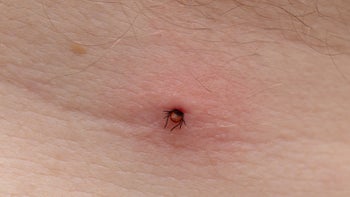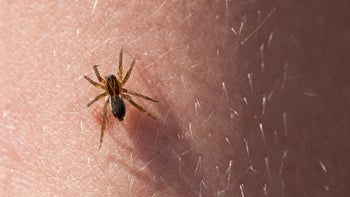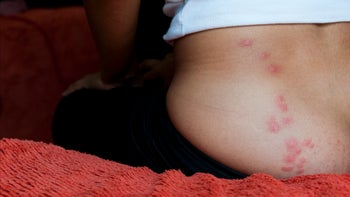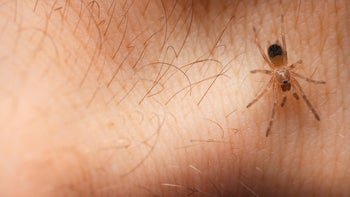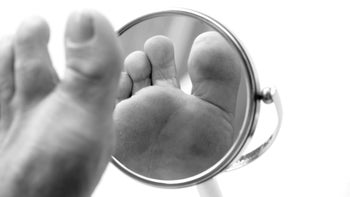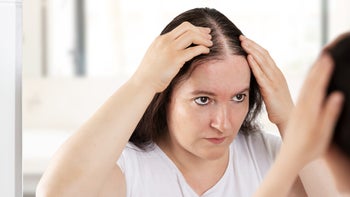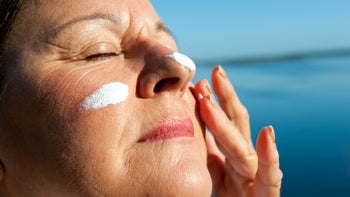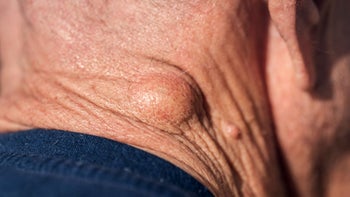
How to (Finally) Stop Biting Your Nails
Key takeaways:
Nail biting is common among kids and adolescents. Most will grow out of it, but long-term nail biting can be harmful.
Nail biting can cause infections of the nail or skin around the nail. It can also cause tooth and jaw damage.
Replacing nail biting with another habit, using a bitter-tasting nail polish, and keeping nails short can help stop nail biting.

Nail biting, or onychophagia, is when a person habitually bites their nails or cuticles (skin around the nail). Nail biting is common among children and adolescents. And it’s a habit that follows many people into adulthood.
Why do people bite their nails? It can be a response to stress or boredom. Some people bite their nails when they’re concentrating on a task. Nail biting can also be associated with mental health conditions like ADHD, separation anxiety disorder, depression, and OCD.
Let’s look at the health effects of nail biting and tips to help you quit nail biting for good.
Search and compare options
Why should you stop biting your nails?
Nail biting may seem harmless, but there are health risks associated with the habit, including:
Changes in nail appearance: Chronic nail biting can permanently damage your nail bed. This can lead to changes in your nail’s appearance, including length, texture, shape, and even color.
Skin and nail Infections: Nail biting can introduce bacteria and fungus into your nail and surrounding skin. This can lead to infections, such as paronychia (infection of the skin around the nail) or onychomycosis (infection of the nail itself).
Dental problems: Nail biting can affect your dental health by injuring teeth and gums. The constant pressure from biting down on your nails can also make your teeth move, leading to rotation and crowding over time.
Jaw pain: Nail biting can also affect your temporomandibular joint (TMJ), which is your jaw joint. TMJ dysfunction can cause pain, difficulty chewing, and headaches.
How can you stop biting your nails?
Many kids who bite their nails will outgrow the habit. But for others, it can be a very difficult pattern to break.
Here are a few ideas to help stop nail biting.
1. Keep nails trimmed
Long or ragged nails may encourage picking and chewing. Instead, keep nails short and well-manicured. You can also try covering nails with tape or a bandage to make it more difficult to bite them.
2. Replace nail biting with another activity
Try replacing nail biting with another habit, like squeezing a stress ball or clenching and unclenching your fists. One study found that more than half of people trying to quit body-focused repetitive behaviors (like nail biting) benefited from habit replacement. So, reach for a stress ball, fidget toy, or chewing gum when you might normally chew on your nails.
Can nail biting cause nail color changes? Yes, nail biting can cause white spots on your nails.
Nail biting can lead to brittle nails. Here’s how to fix nail splitting.
Nail biting can lead to nail infections. Here’s how to tell if you have a nail bed infection.
3. Apply bitter polish
Another way to help put an end to nail biting is with aversion therapy, which is when you make nail biting less pleasant. Bitter-tasting nail polish is a form of aversion therapy. These polishes are safe but taste terrible, which can make nail biting less appealing.
Keep in mind that the goal isn’t to punish nail biting. The goal is to remind yourself to pause and redirect what you’re doing. Research suggests that punishing kids for nail biting can make the problem worse. Instead, focus on redirection, and bitter nail polish helps children do that.
4. Wear a reminder
One small study found that wearing a wristband as a reminder of the goal to quit nail biting helped people stop biting their nails. Unlike aversive therapies (like wearing bitter nail polish), people were more likely to stick with this method over time.
Read more like this
Explore these related articles, suggested for readers like you.
5. Habit reversal training
Some researchers have looked into combining multiple techniques to help people stop nail biting. One group studied habit reversal training, which includes awareness training, instruction on performing a competing (or replacement) activity, and social support. Habit reversal training was very effective. People who went through this treatment saw more than 20% nail growth.
6. Medication
Medication isn’t typically the first choice for treating nail biting. But in some cases, nail biting may be related to an underlying condition, like obsessive compulsive disorder (OCD) or depression. Nail biting may get better once people receive treatment for the underlying condition — whether through therapy, medication, or both.
How long does it take to break a nail-biting habit?
It depends. Despite how many people struggle with nail biting, there isn’t much research on how long it takes to quit.
General studies on habit formation show that it can take 18 to 254 days to form a new habit. It’s also not clear what the best strategy is — the same technique might not work as well for everyone. When it comes to understanding how to break a habit like nail biting, there’s a lot of room for further research.
The bottom line
Long-term nail biting can lead to changes in nail shape and appearance, infection, and dental problems. Effective techniques for quitting nail biting include replacing the habit with a different one, wearing a reminder of the goal to stop nail biting, and keeping nails short. In some cases, nail biting may be associated with a mental health condition, so talk to your healthcare team if you aren’t able to stop nail biting on your own.
Why trust our experts?


References
American Academy of Dermatology Association. (n.d.). How to stop biting your nails.
Anolik, R. B., et al. (2012). Onychophagia-induced longitudinal melanonychia. Pediatric Dermatology.
Arlinghaus, K. R., & Johnston, C. A. (2018). The importance of creating habits and routine. American Journal of Lifestyle Medicine.
Baghcheci, M., et al. (2023). Art of prevention: The importance of tackling the nail biting habit. International Journal of Women’s Dermatology.
Cohen P. R. (2022). Nail-associated body-focused repetitive behaviors: Habit-tic nail deformity, onychophagia, and onychotillomania. Cureus.
Hostutler, C. (2018). Nail biting prevention and habit reversal tips: How to get your child to stop. Nationwide Children’s.
Lee, D. K., et al. (2022). Update on diagnosis and management of onychophagia and onychotillomania. International Journal of Environmental Research and Public Health.
Koritsky, G., et al. (2011). On the value of nonremovable reminders for behavior modification: An application to nail-biting (onychophagia). Behavior Modification.
Marouane, O., et al. (2016). New approach to managing onychophagia. Case Reports in Dentistry.
Moritz, S., et al. (2023). Self-help habit replacement in individuals with body-focused repetitive behaviors: A proof-of-concept randomized clinical trial. JAMA Dermatology.
NIH News In Health. (2012). Breaking bad habits: Why it’s so hard to change.
Twohig, M. J. P., et al. (2003). Evaluating the efficacy of habit reversal: Comparison with a placebo control. The Journal of Clinical Psychiatry.
Wu, B. (2016). Onychophagia. DermNet.






